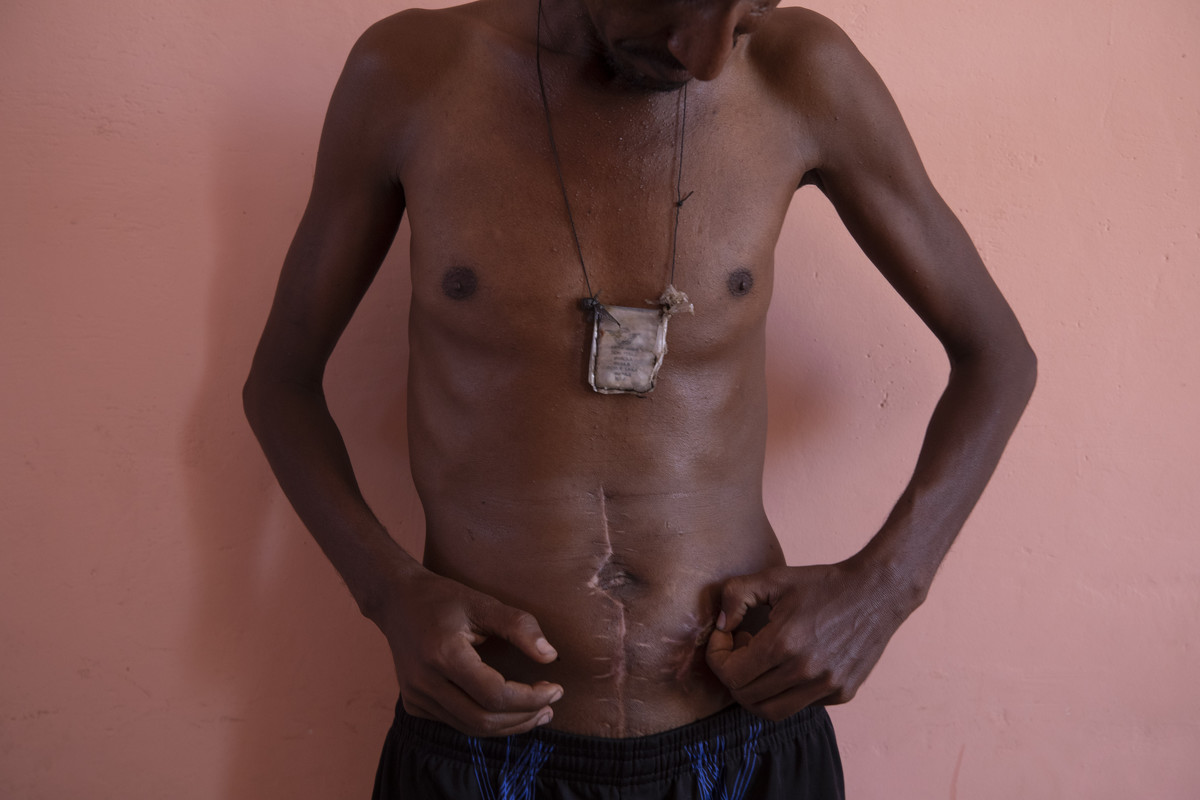
Farmer Nega Chekole, 30, a Tigrayan refugee from Humera, touches his stitched wound in Hamdayet, eastern Sudan, near the border with Ethiopia, on March 14, 2021. He says he was shot by militias before the war broke out on Nov. 4. The atrocities have been seared into the skin. It's often the only evidence at hand to show the world. Now Tigrayans by the thousands take shelter within sight of the homeland they left behind in northern Ethiopia, some of them told to leave or be killed. (AP Photo/Nariman El-Mofty)
HAMDAYET, Sudan (AP) - The atrocities have been seared into the skin and minds of Tigrayans, who shelter by the thousands within sight of the homeland they fled in northern Ethiopia.
They arrive in heat that soars above 38 C (100 F), carrying the pain of gunshot wounds, torn vaginas, welts on beaten backs. Less visible are the memories: Dozens of bodies strewn on riverbanks. Fighters raping a woman one by one for speaking her own language. A child, weakened by hunger, left behind.
Now, for the first time, they also bring proof of an official attempt at what is being called ethnic cleansing in the form of a new identity card that eliminates all traces of Tigray, as confirmed to The Associated Press by nine refugees from different communities. Written in a language not their own, issued by authorities from another ethnic group, the cards are seen as the latest evidence of a drive by Ethiopia and its allies to destroy the Tigrayan people.
The Amhara authorities now in charge of the nearby city of Humera took Seid Mussa Omar's original ID card displaying his Tigrayan identity and burned it, the soft-spoken nurse said. His new card examined by the AP, issued in January, displays the Amharic language, an Amhara stamp and a border of tiny hearts.
"I kept it to show the world," Seid said. "This is genocide …Their aim is to erase Tigray."
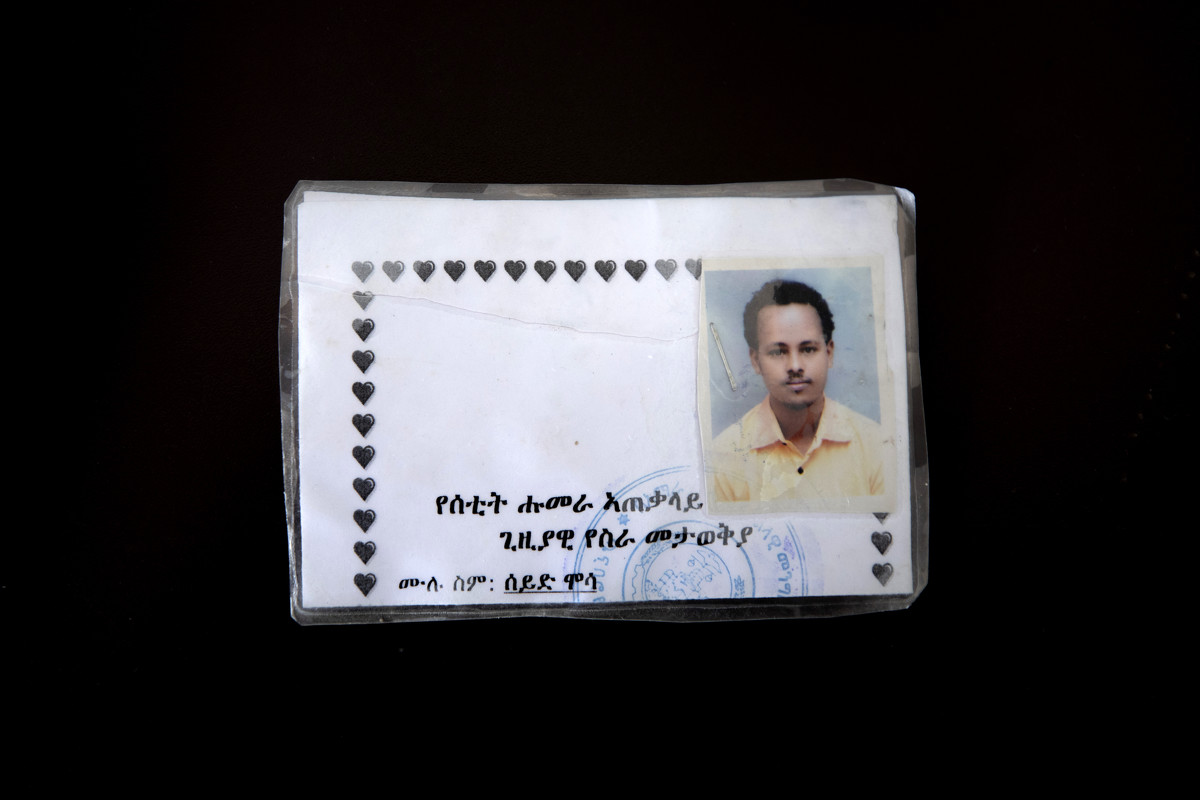
This March 17, 2021 photo shows a new ID card issued by Amhara authorities to Seid Mussa Omar, a 29-year-old Tigrayan nurse from Humera, who fled to Hamdayet, eastern Sudan, near the border with Ethiopia. Amhara authorities took Omar's original ID card displaying his Tigrayan ethnicity and burned it, he said. On the new card examined by the AP, traces of Tigray had vanished. It was issued in January 2021 in a city located so far north in Ethiopia that it is within sight of neighboring Eritrea. Yet the card is stamped by authorities of the Amhara region to the south. The language on the card is Amharic, not the Tigrinya of Tigray. Translation from Amharic reads, "Setit Humera General Temporary Work Place Identity - Full Name: Seid Mussa." (AP Photo/Nariman El-Mofty)
What started as a political dispute in one of Africa's most powerful countries has turned into a campaign against minority Tigrayans, according to AP interviews with 30 refugees in Sudan. The Ethiopian government of Nobel Peace Prize winner Abiy Ahmed is accused of teaming up with Abiy's ethnic group - his mother was Amhara - and soldiers from neighboring Eritrea, long an enemy of Tigray's now-fugitive leaders, to punish around 6 million people.
Ethiopia claims life in Tigray is returning to normal. But the refugees said abuses still occur. Almost all described killings, rapes and the destruction of crops that without massive food aid could tip the region into starvation.
For months, Tigray has been largely sealed off from the world, with electricity and telecommunication access severed, leaving little to support claims that perhaps tens of thousands of people have been killed.
U.S. Secretary of State Antony Blinken asserted last month that "ethnic cleansing" has taken place in western Tigray, marking the first time a top official in the international community has openly described the situation as such. The term refers to forcing a population from a region through expulsions and other violence, often including killings and rapes.
Refugees said Amhara authorities have taken over communities and ordered Tigrayans out. Goitom Hagos from Humera, told the AP he saw thousands of Tigrayans loaded into trucks, and doesn't know what happened to them.
Some Tigrayans were ordered to accept the Amhara identity or leave, refugees said.
The Tigray conflict began in November as a political clash of past and present. Tigray leaders had dominated the country's government for nearly three decades, creating a system of ethnic-based regional states. But Abiy took office in 2018 and moved to centralize power. He sidelined the Tigray leaders and made peace with Eritrea, earning a Nobel Peace Prize.
The defiant Tigray leaders viewed the central government as illegal after last year's election was delayed, and held their own vote. The government opened a military offensive, saying Tigray forces had attacked a military base. Witnesses say Amhara and Eritrean forces essentially split much of Tigray between them.
Ethiopia says it rejects "any and all notions and practices of ethnic cleansing." An Amhara regional spokesman refused to comment.
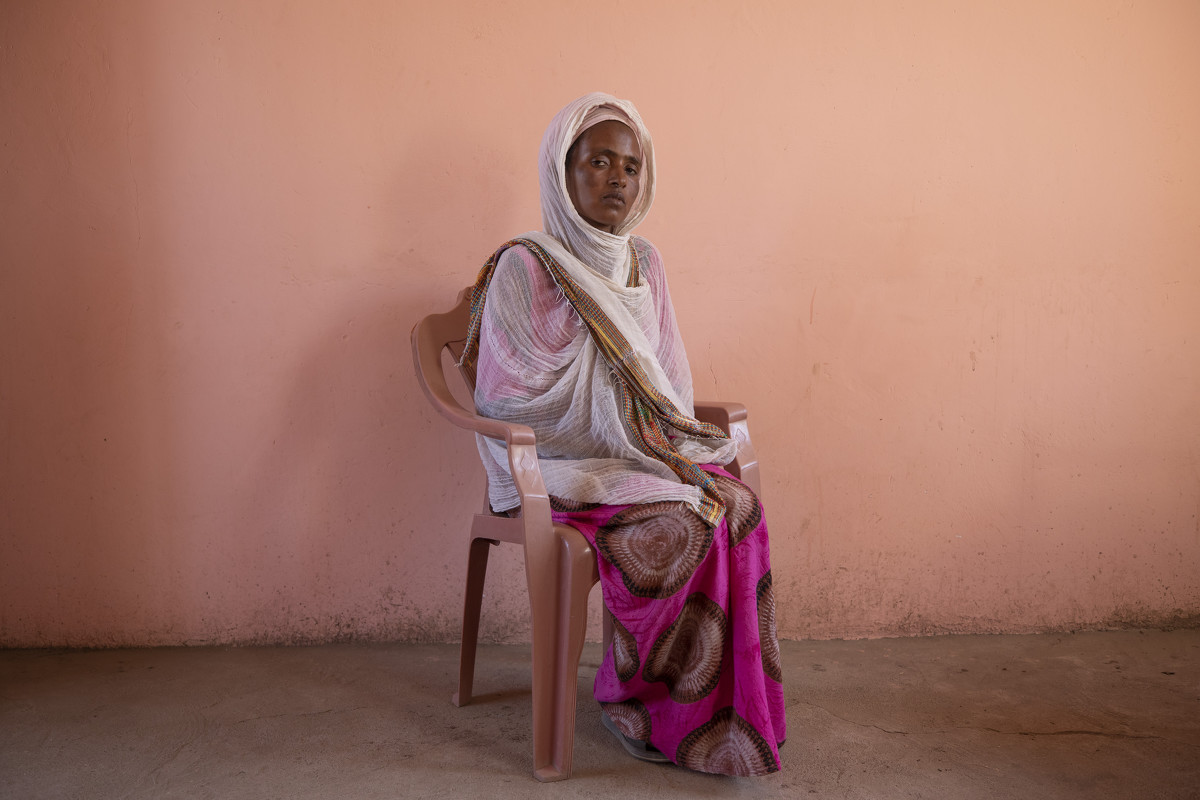
Tigrayan refugee Alem Mebrahtu, 30, who fled the conflict in Ethiopia's Tigray, sits for a portrait in eastern Sudan, near the border with Ethiopia, on March 15, 2021. Bodies were strewn near the riverbank, she said. "Some were face-down. Some were looking up at the sky." She estimated some 50 corpses. (AP Photo/Nariman El-Mofty)
The killings continue. In early March, 30-year-old Alem Mebrahtu attempted a crossing of the Tekeze river between the parts of Tigray under Eritrean and Amhara sway. Separated from her children in the conflict, she had heard they were in Sudan.
About 50 bodies were strewn near the riverbank, she said. "Some were face-down. Some were looking up at the sky." Exhaustion pressed deep under her eyes, she started to cry.
Reluctantly, to protect herself, she is trying to learn Amharic.
"Their aim is to leave no Tigrayan," she said.
The refugees said rapes are also widespread. One woman said when she returned to her looted home in Humera, she was seized by militia members speaking Amharic. She asked them to speak Tigrinya, and they attacked her.
"Claim to be Amhara and we'll give you back your house and find you a husband," the men said. "But if you claim to be Tigrayan, we will come and rape you again."
She is now pregnant. The AP doesn't name people who have been sexually abused.
The United Nations has said more than 500 rapes in Tigray have been reported to health care workers. But armed groups have destroyed most of Tigray's health centers, leaving little help.
And there is more pain to come.
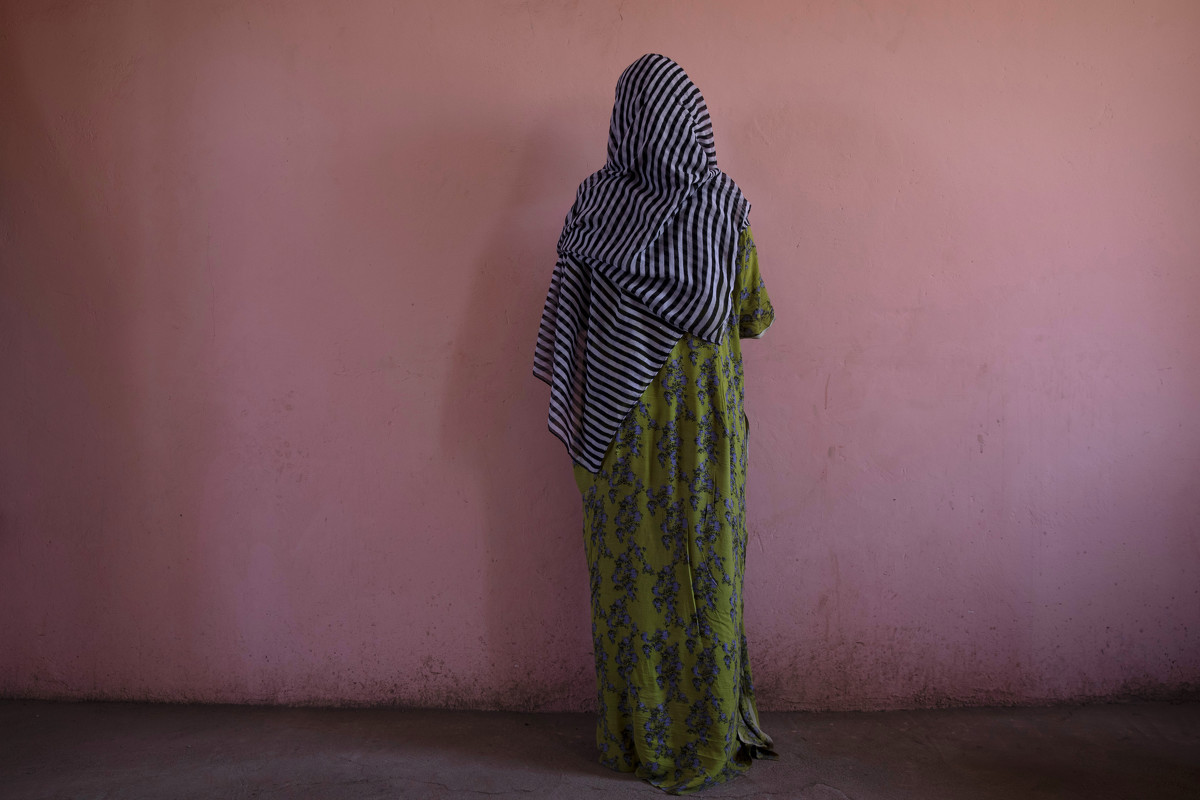
A Tigrayan woman who says she was gang raped by Amhara fighters, stands for a portrait in eastern Sudan, near the border with Ethiopia, on March 23, 2021. "Let the Tigray government come and help you," she recalled them saying, even while they were raping her. (AP Photo/Nariman El-Mofty)
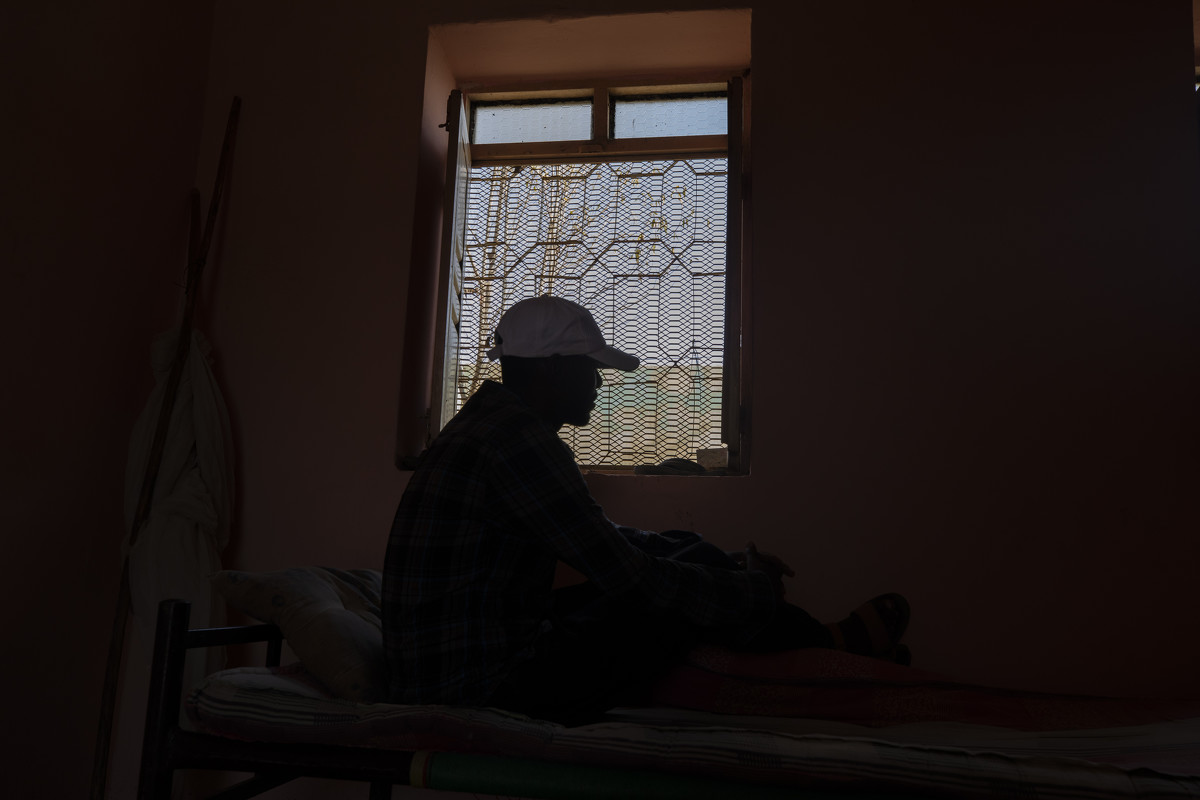
Tigrayan refugee Kidu Gebregirgis, a farmer who fled the conflict in Ethiopia's Tigray, is photographed in eastern Sudan, near the border with Ethiopia, on March 15, 2021. Gebregirgis said he was questioned almost daily about his ethnicity, his shirt yanked aside to check for marks from the strap of a gun. He said the Amhara harvested some 5,000 kilograms (5.5 tons) of sorghum from his fields and hauled it away. The task took two weeks to complete. He never tried to stop them. (AP Photo/Nariman El-Mofty)
Almost every refugee described a worrying shortage of food. Most saw crops being looted or burned. Kidu Gebregirgis, a farmer, said the Amhara harvested around 5,000 kilograms (5.5 short tons) of sorghum from his fields and hauled it away, a task that took two weeks.
The conflict began shortly before the harvest in the largely agricultural region. Now the planting season approaches.
"But there is no seed," Kidu said. "There's nothing to start again."
Tigrayans who passed through rural communities described starving people, often elderly, begging outside churches. Sometimes they did, too.
Again, ethnicity was crucial. Belaynesh Beyene, from Dansha, said she made sure to speak Amharic when approaching homes in western Tigray for food.
Ethiopia, under international pressure, has said food aid has been distributed to more than 4 million people in Tigray. Refugees disagreed.
Maza Girmay, 65, said she heard food was being distributed, so she went to the government office in Bahkar to inquire.
"They told me, 'Go home, you're Tigrayan,'" she said. The rejection brought her to tears.
A colonel with the Tigray fighters, Bahre Tebeje, worried that starvation will kill more people than the war itself.
Tigrayans are still arriving daily at the border post where Sudanese soldiers watch a no man's land. One recent evening, the AP saw three approaching.
In Sudan, the Tigrayans are registered and asked for their ethnicity. For once, they are free to answer.
____
This story was funded by a grant from the Pulitzer Center on Crisis Reporting.
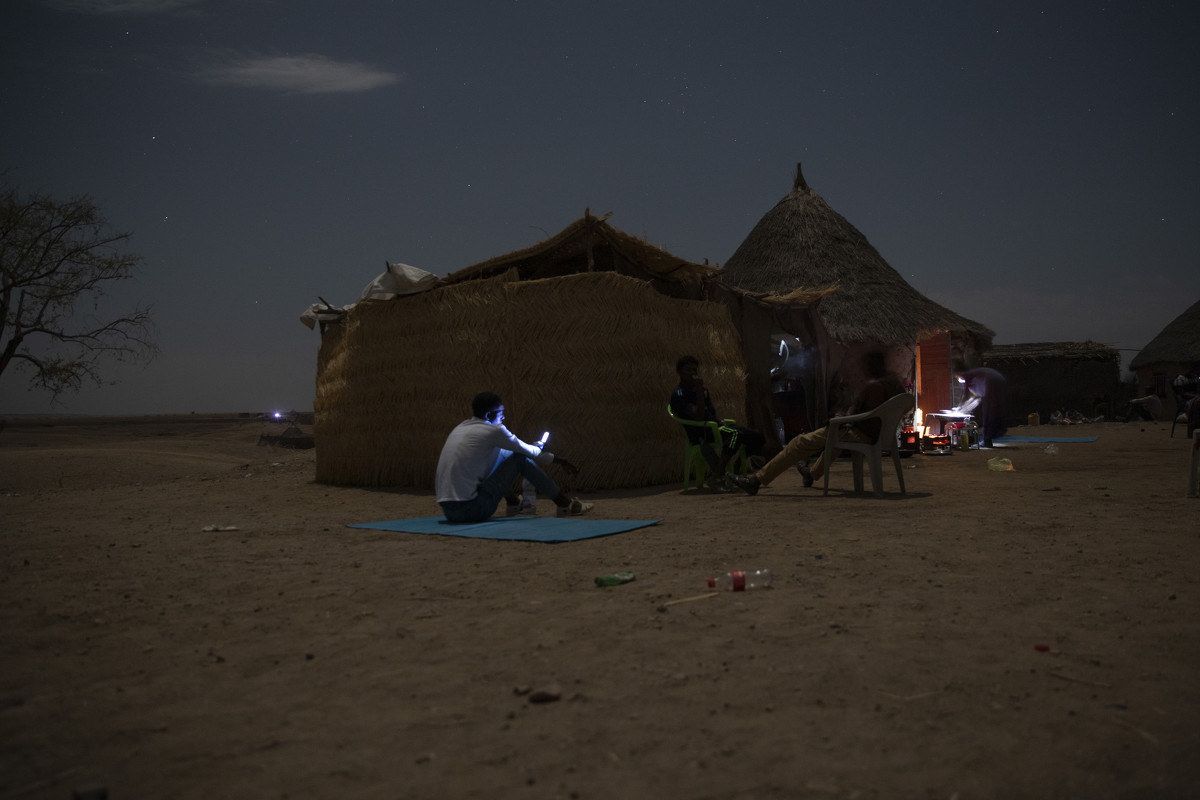
Tigrayan refugees who fled the conflict in the Ethiopia's Tigray try to find a network signal for their mobile phones in Hamdayet, eastern Sudan, near the border with Ethiopia, on March 23, 2021. For months, it has been the Tigrayans' word against that of the government in Ethiopia, Africa's second most populous country and one of its most powerful. But now, for the first time, there is official proof of what is being called ethnic cleansing in the form of identity cards smuggled across the border into this Sudanese border post and confirmed to The Associated Press by more than a half-dozen refugees from different communities. (AP Photo/Nariman El-Mofty)
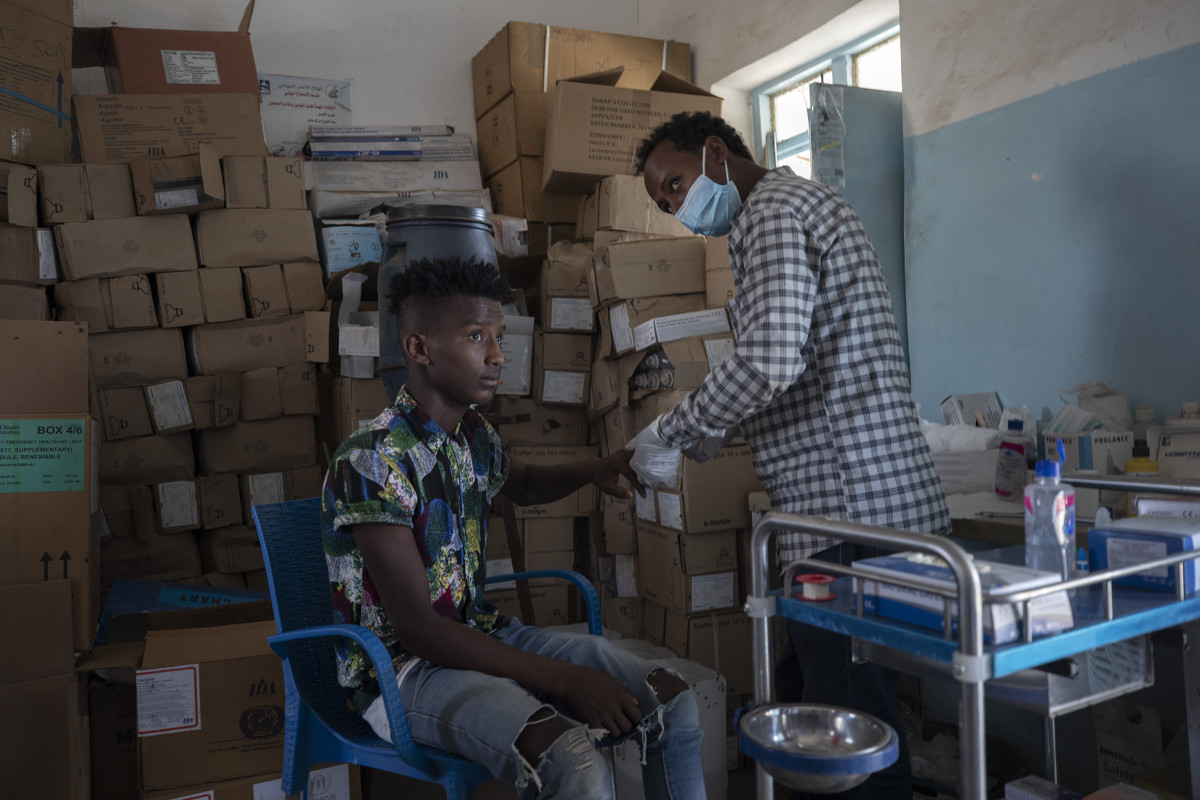
Seid Mussa Omar, a 29-year-old Tigrayan nurse from Humera, treats a man at the Sudanese Red Crescent clinic, in Hamdayet, eastern Sudan, near the border with Ethiopia, on March 17, 2021. Amhara authorities now in charge took Omar's original ID card displaying his Tigrayan ethnicity and burned it, he said. On the new card examined by the AP, traces of Tigray had vanished. It was issued in January 2021 in a city located so far north in Ethiopia that it is within sight of neighboring Eritrea. Yet the card is stamped by authorities of the Amhara region to the south. The language on the card is Amharic, not the Tigrinya of Tigray. (AP Photo/Nariman El-Mofty)
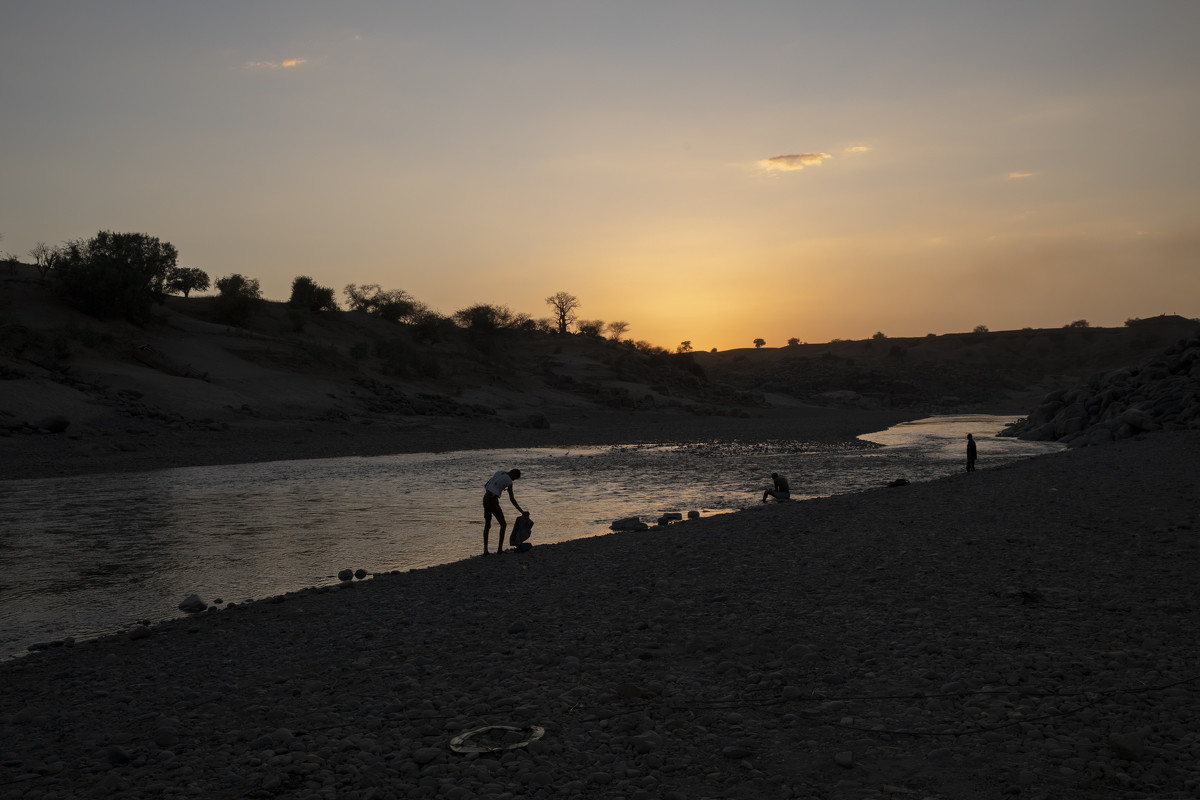
People stand on the banks of the Tekeze River, on the Sudan-Ethiopia border after Ethiopian forces blocked individuals from crossing into Sudan, near Hamdayet, eastern Sudan, on March 16, 2021. Ethiopia is at left, and Sudan is at right. (AP Photo/Nariman El-Mofty)
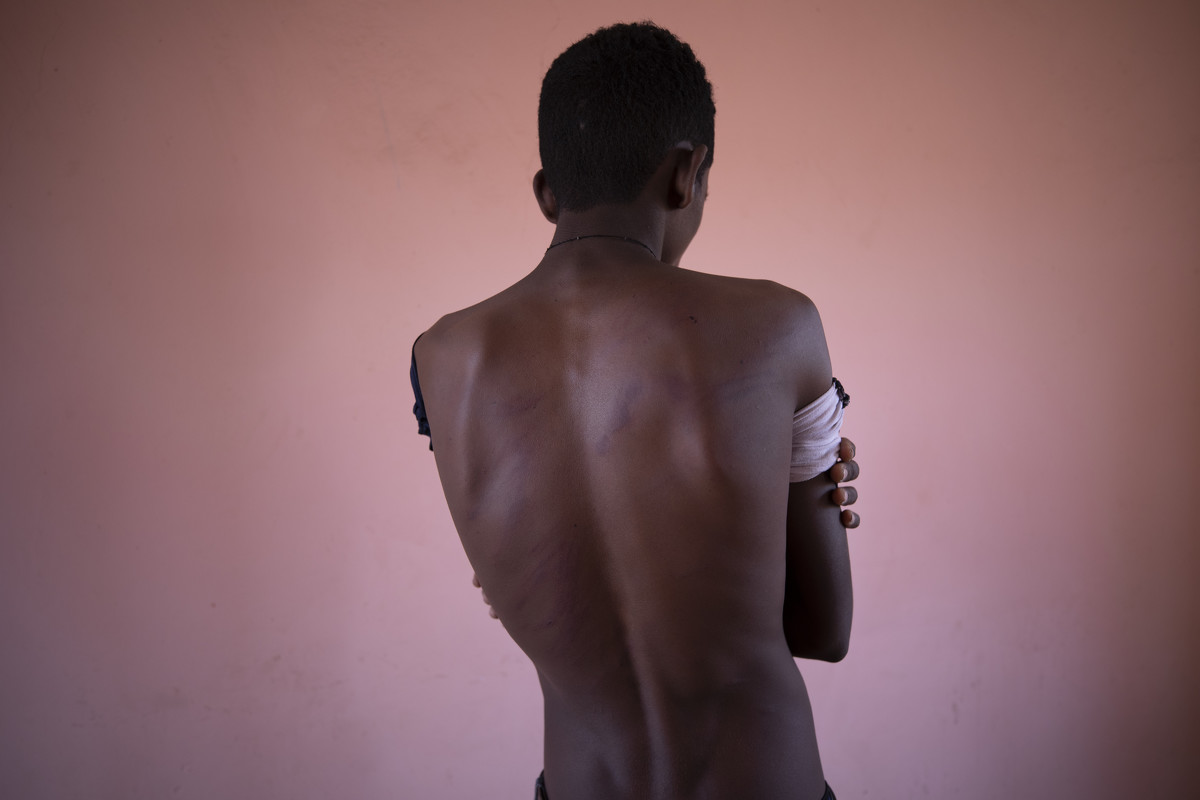
Fisseha Welay, an 18-year-old Tigrayan student who fled the conflict in Ethiopia's Tigray, shows the wounds on his back from being beaten by Eritrean soldiers, hours after his arrival to Hamdayet, eastern Sudan, near the border with Ethiopia, on March 17, 2021. The atrocities have been seared into the skin. They arrive in heat that soars above 100 degrees, carrying the pain of gunshot wounds, torn vaginas, fresh welts on malnourished backs from beatings. Unseen are the horrors that jolt them awake at night. Bodies strewn on riverbanks. (AP Photo/Nariman El-Mofty)
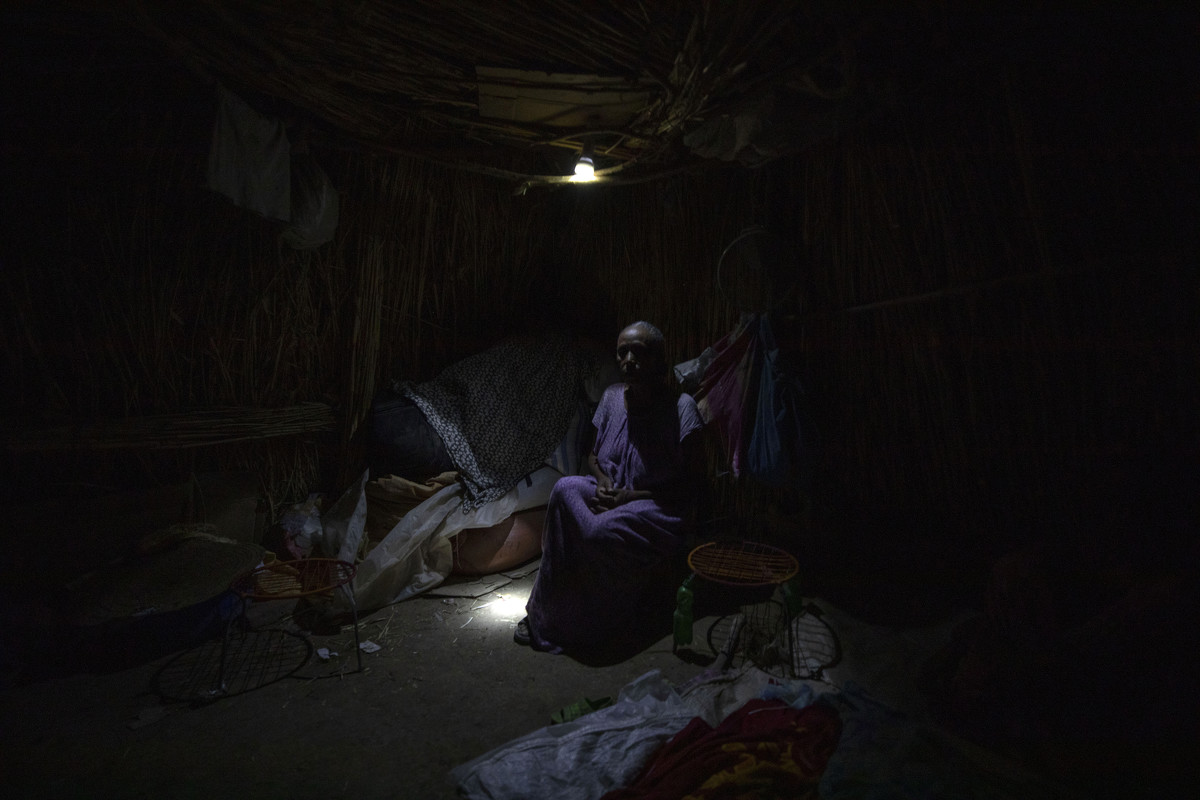
Tigrayan refugee Belaynesh Beyene, 58, who fled the conflict in the Ethiopia's Tigray, sits in her shelter in Hamdayet, eastern Sudan, near the border with Ethiopia, on March 13, 2021. Beyene said she saw 24 bodies in Dansha. "They accidentally killed an ethnic Oromo in a Tigrayan household," she said. "When they realized their 'mistake,' they came and buried him." (AP Photo/Nariman El-Mofty)
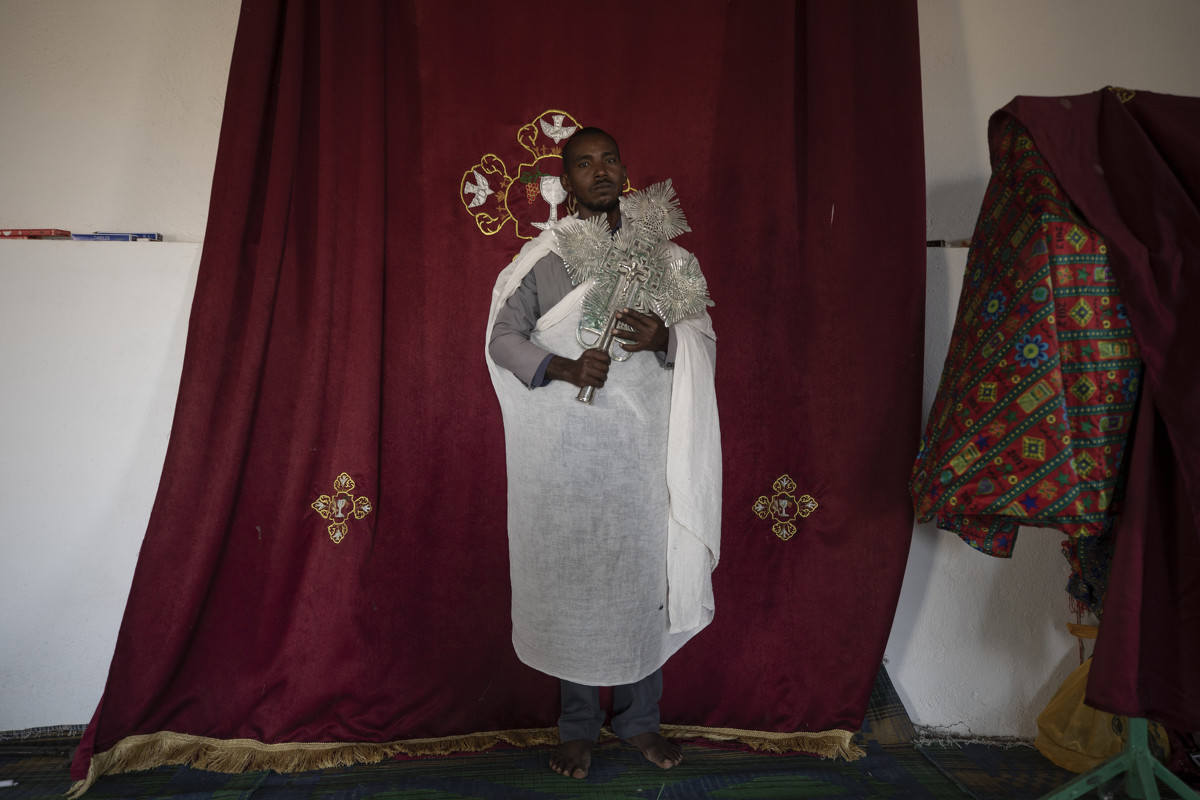
Ordained priest Berhane Debesu, 34, a Tigrayan refugee from Humera, stands with a cross at the church in Hamdayet, eastern Sudan, near the border with Ethiopia, on March 15, 2021. What started as a political dispute in one of Africa's most powerful and populous countries has turned into a campaign of what is being called ethnic cleansing against minority Tigrayans, according to AP interviews with 30 refugees in Sudan and dozens more by phone, along with international officials. (AP Photo/Nariman El-Mofty)
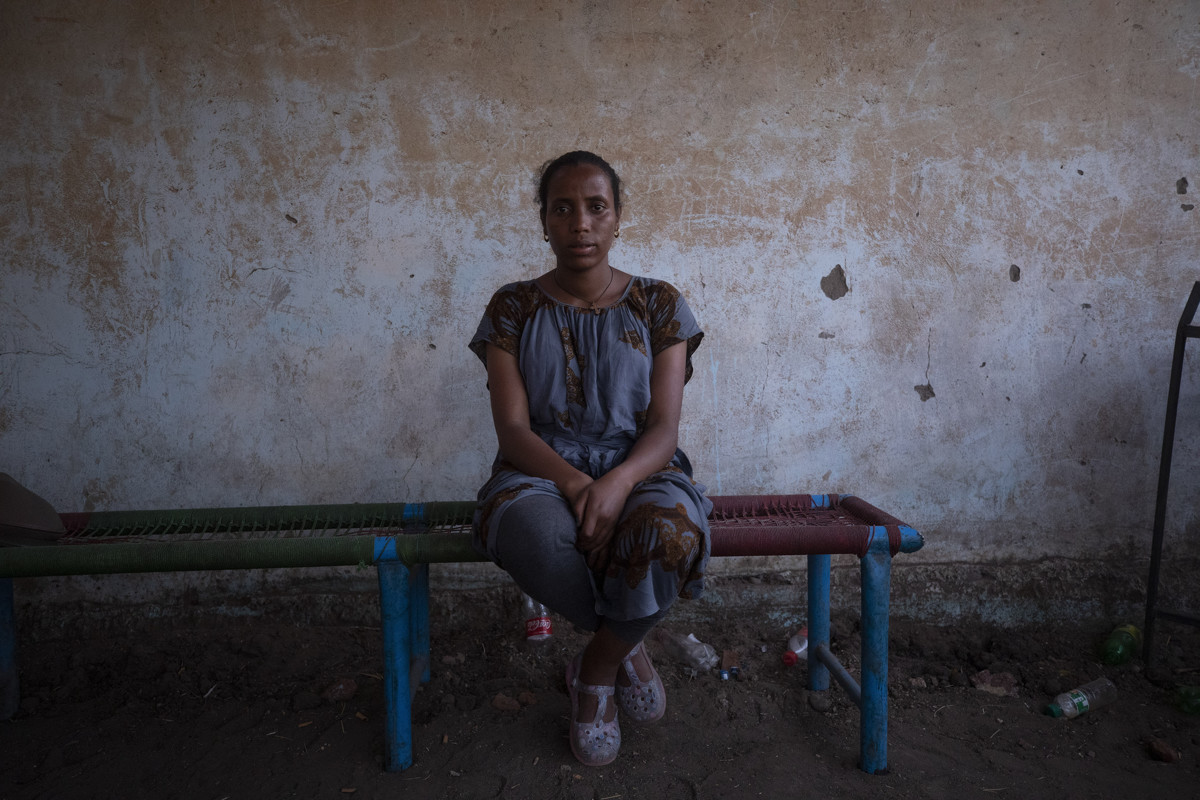
Elsa Tesfa Berhe, 26, center, a reproductive health official from Adwa, sits on a bench hours after arriving from Humera to Hamdayet, eastern Sudan, near the border with Ethiopia, on March 15, 2021. Reusing gloves and rationing water, Berhe treated women secretly after Eritrean soldiers swept through health centers, looting even the beds and telling patients to leave. As she snuck out to deliver babies and treat the wounded, she saw people trying to bury bodies at the risk of being shot, or pouring alcohol on corpses in an attempt to hide the smell. (AP Photo/Nariman El-Mofty)
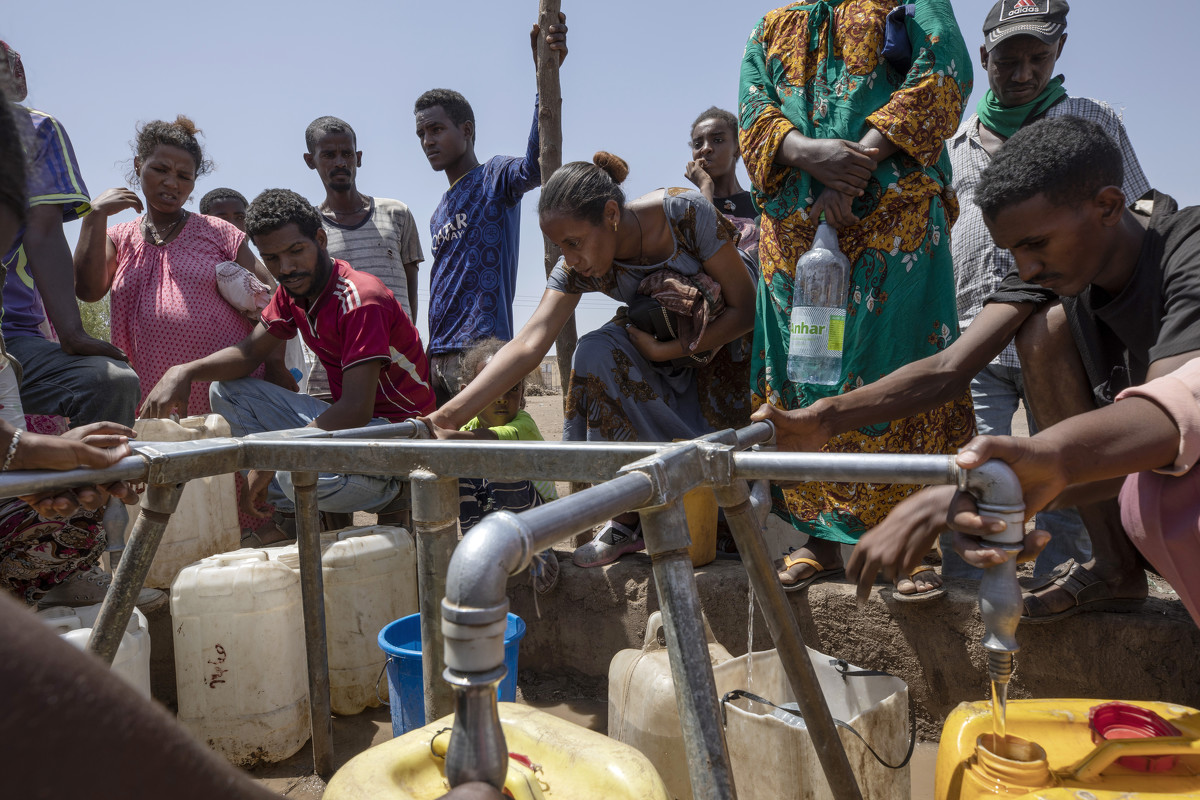
Elsa Tesfa Berhe, 26, center, a reproductive health official from Adwa, collects water a day after arriving from Humera to Hamdayet, eastern Sudan, near the border with Ethiopia, on March 16, 2021. Reusing gloves and rationing water, Berhe treated women secretly after Eritrean soldiers swept through health centers, looting even the beds and telling patients to leave. As she snuck out to deliver babies and treat the wounded, she saw people trying to bury bodies at the risk of being shot, or pouring alcohol on corpses in an attempt to hide the smell. (AP Photo/Nariman El-Mofty)
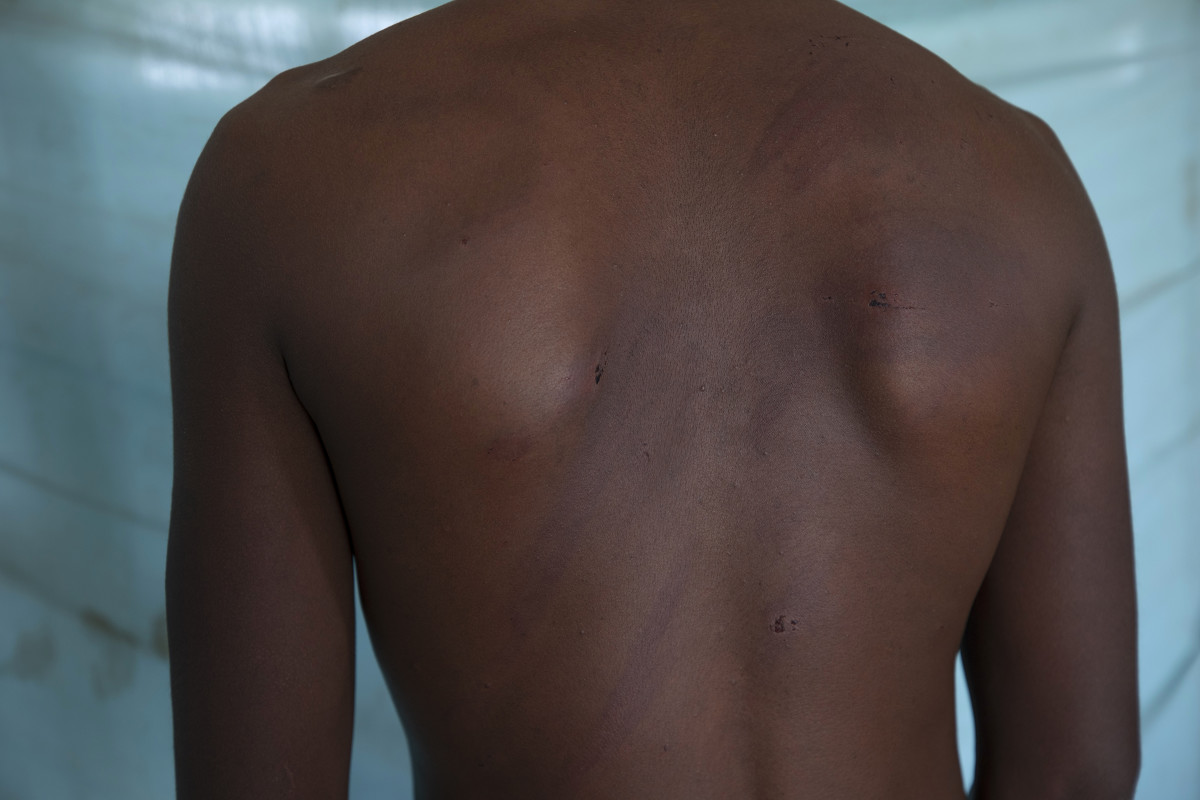
Adhanom Gebrehanis, a 20-year-old Tigrayan refugee from Korarit village, shows the welts on his back from a beating by Eritrean soldiers, after a checkup at the Sudanese Red Crescent clinic shortly after his arrival in Hamdayet, eastern Sudan, near the border with Ethiopia, on March 18, 2021. "They do these things openly to make us ashamed." He described watching Eritreans pull aside 20 women from a group of Tigrayans and rape them. The next day, 13 of the women were returned. (AP Photo/Nariman El-Mofty)
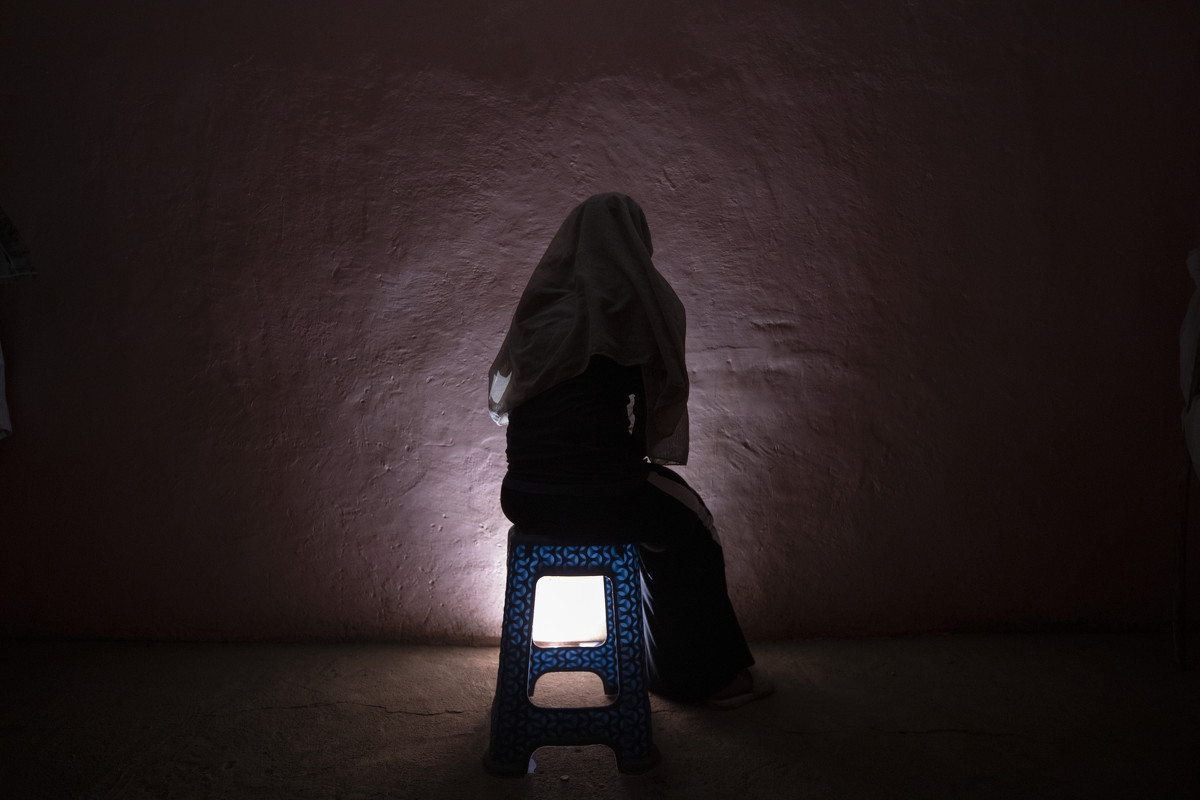
A Tigrayan refugee rape victim who fled the conflict in Ethiopia's Tigray sits for a portrait in eastern Sudan near the Sudan-Ethiopia border, on March 20, 2021. Several refugees from different Tigray communities told the AP they watched or listened helplessly as women were taken away by Amhara or Eritrean fighters and raped. (AP Photo/Nariman El-Mofty)
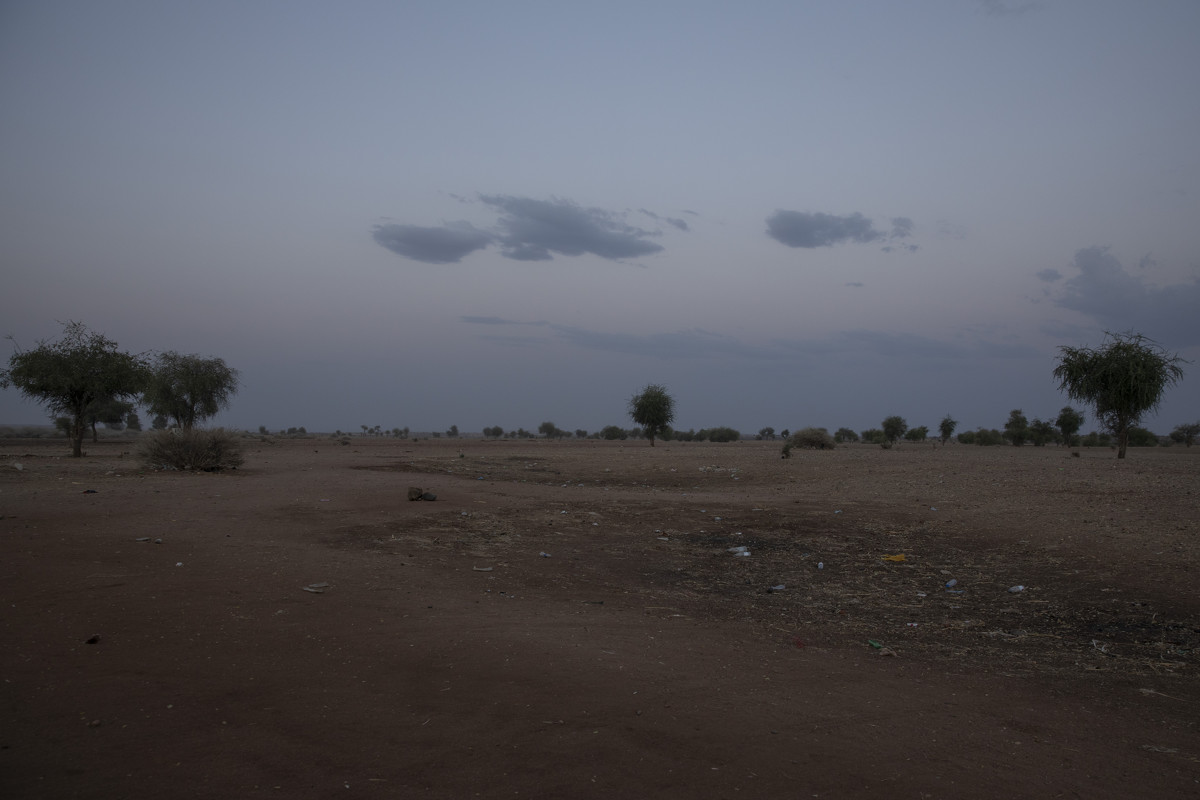
This March 23, 2021 photo shows the area at the Sudan-Ethiopia border. Battered and hungry, Tigrayans still arrive daily at the border post where Sudanese soldiers watch a no man's land. In Sudan, the Tigrayans are registered and asked for their ethnicity. For once, they are free to answer. (AP Photo/Nariman El-Mofty)
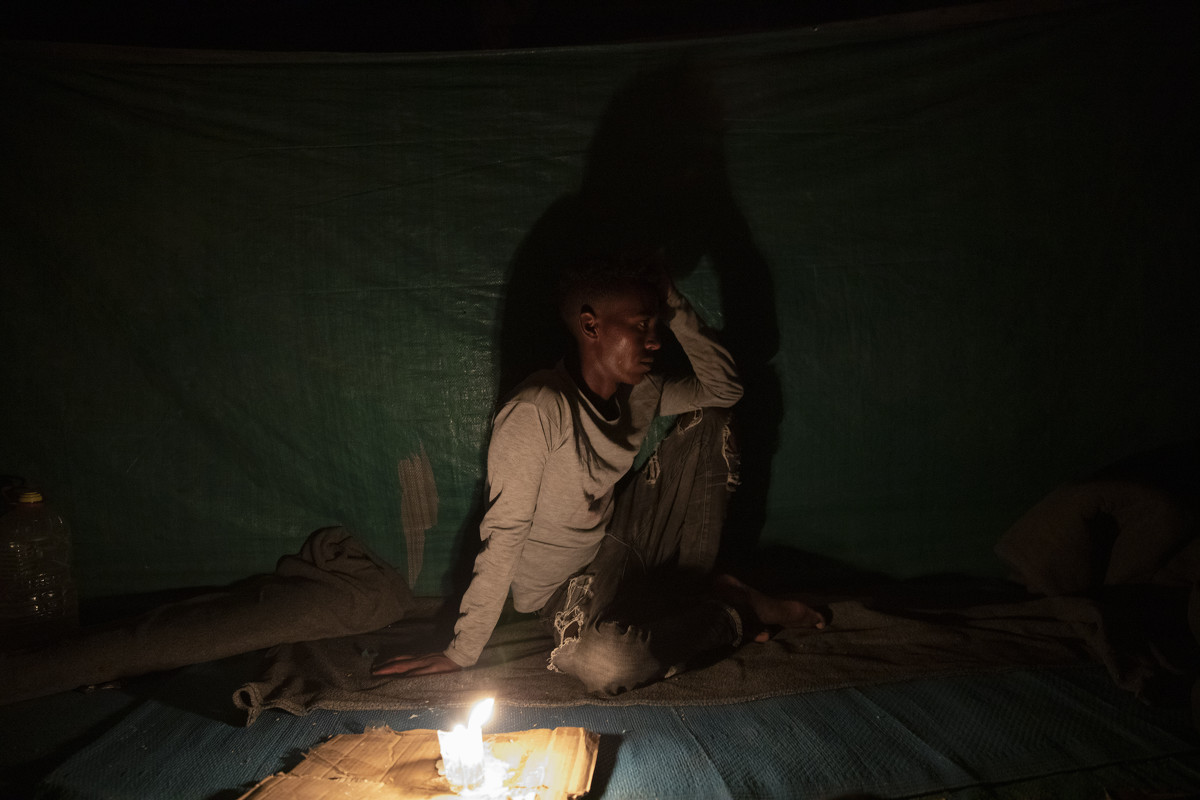
Abedom, a 25-year-old day laborer and Tigrayan refugee, sits for a portrait inside his friends' shelter in Hamdayet, eastern Sudan, near the border with Ethiopia, on March 16, 2021. Abedom spent three months roaming in mountains and rural villages. "It was normal to go a whole day without food. So many people were hungry. They loot everything, so if they take it all, how do I survive?" (AP Photo/Nariman El-Mofty)
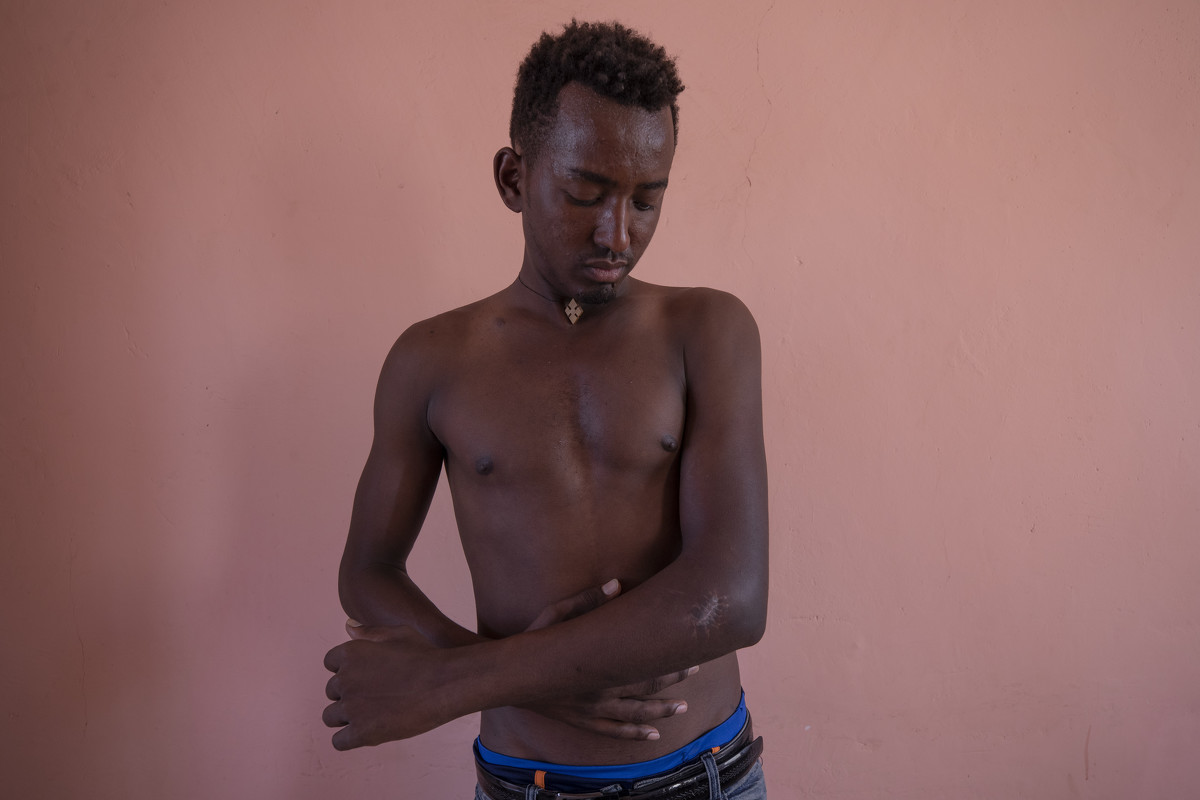
Berhane Gebrewahid, a 24-year-old Tigrayan farmer who fled the conflict in Ethiopia's Tigray, stands for a portrait in eastern Sudan, near the border with Ethiopia, on March 14, 2021, showing his gunshot wound from Amhara and Wolkait fighters seeking his cattle. Gebrewahid said he saw food aid being distributed in February 2021 by Amhara authorities. But it was refused to Tigrayans. "I saw this," he said. "It happened to me. First, they asked your ethnicity." Even the name of his homeland had changed, he said. "They called it Northern Gondar," after a major city in Amhara. (AP Photo/Nariman El-Mofty)
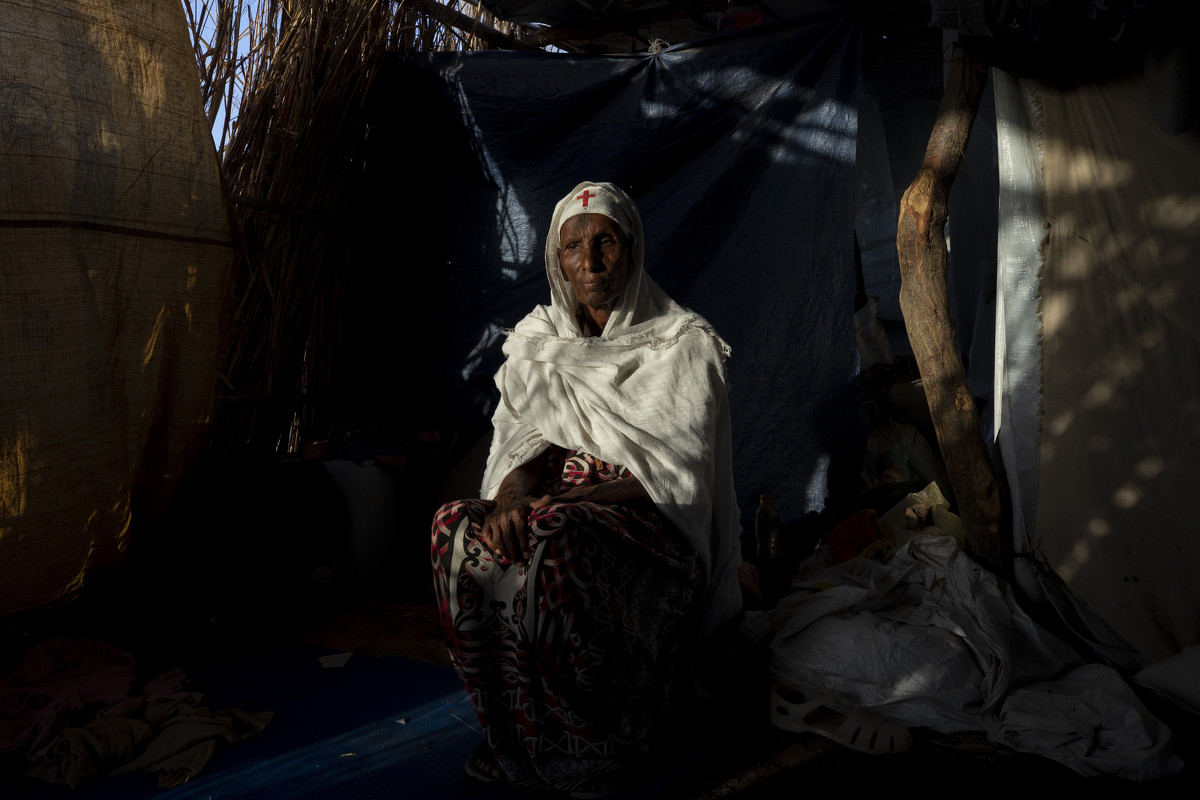
Tigrayan refugee Maza Girmay, 65, sits in her shelter, in Hamdayet, eastern Sudan, near the border with Ethiopia, on March 15, 2021. "I heard food was being distributed," she said. She went to the government office in her community of Bahkar to inquire. "They told me, 'Go home, you're Tigrayan.'" The rejection brought her to tears. "We Tigrayans are Ethiopian. Why do they treat us as non-Ethiopian?" she said. (AP Photo/Nariman El-Mofty)
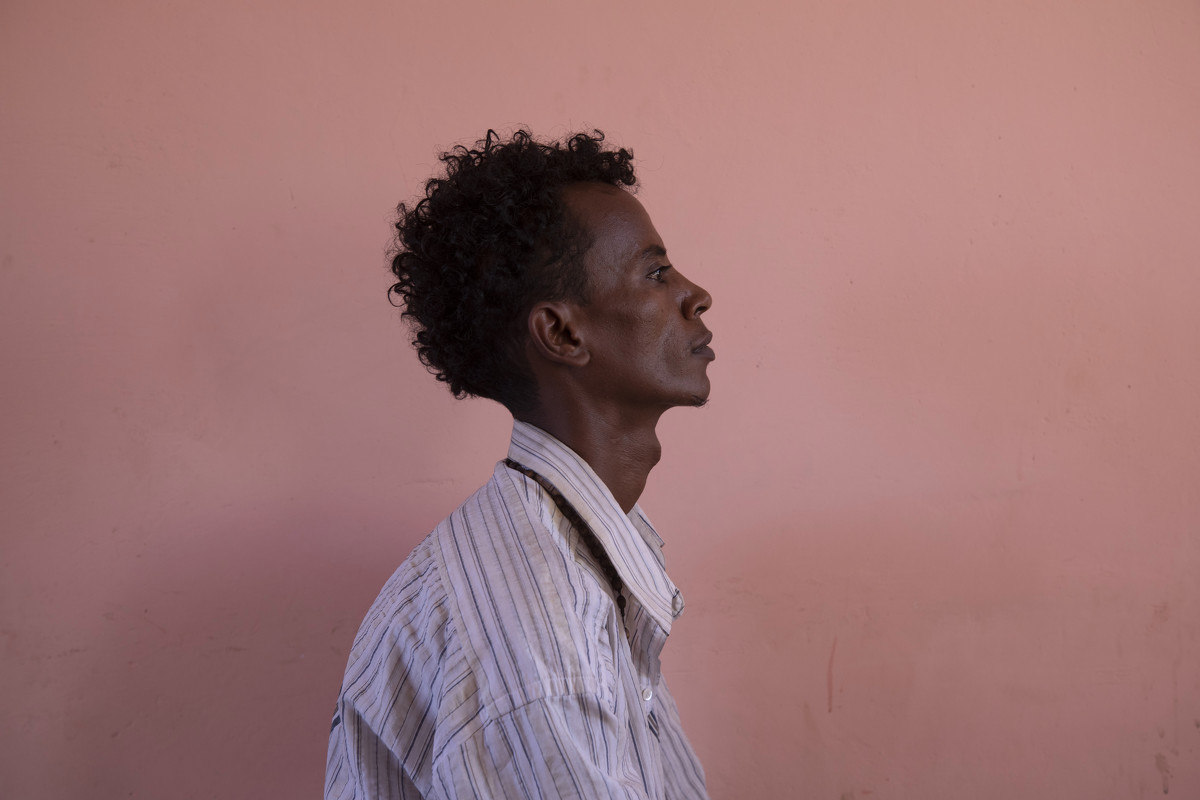
Tigrayan refugee Goitom Hagos, a 26-year-old nurse from Humera who fled the conflict in Ethiopia's Tigray, is photographed in eastern Sudan near the Sudan-Ethiopia border, on March 18, 2021. "I saw many Tigrayans collected and loaded into vehicles. I saw thousands," said Hagos, who was detained by police for several days with some 300 people, including children. (AP Photo/Nariman El-Mofty)
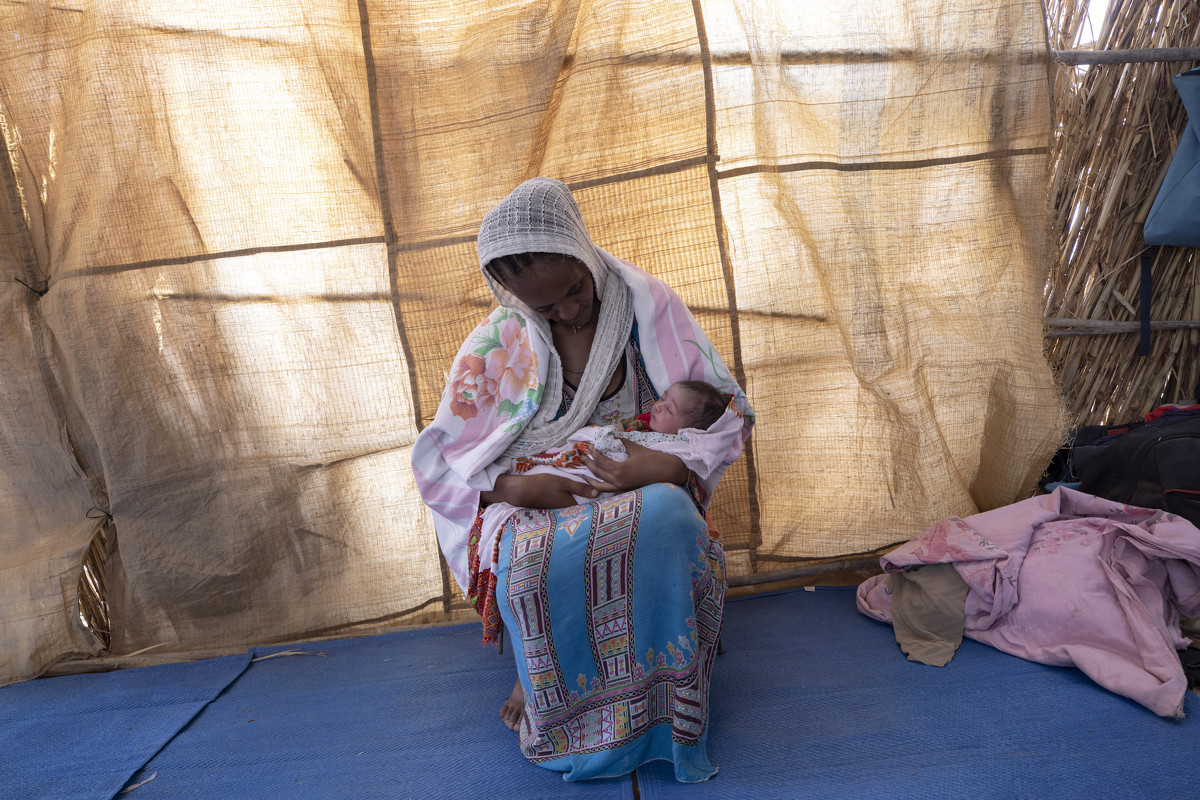
Lemlem Gebrehiwet, a 20-year-old Tigrayan refugee, holds her 3-day-old daughter, Semhal, in their shelter in Hamdayet, eastern Sudan, near the border with Ethiopia, on March 16, 2021. Other Tigrayans were turned away because of who they were. "They started distributing new ID cards in Bahkar but only for Amhara and Wolkait," said Gebrehiwet, who fled while heavily pregnant and gave birth three days after reaching Sudan. (AP Photo/Nariman El-Mofty)
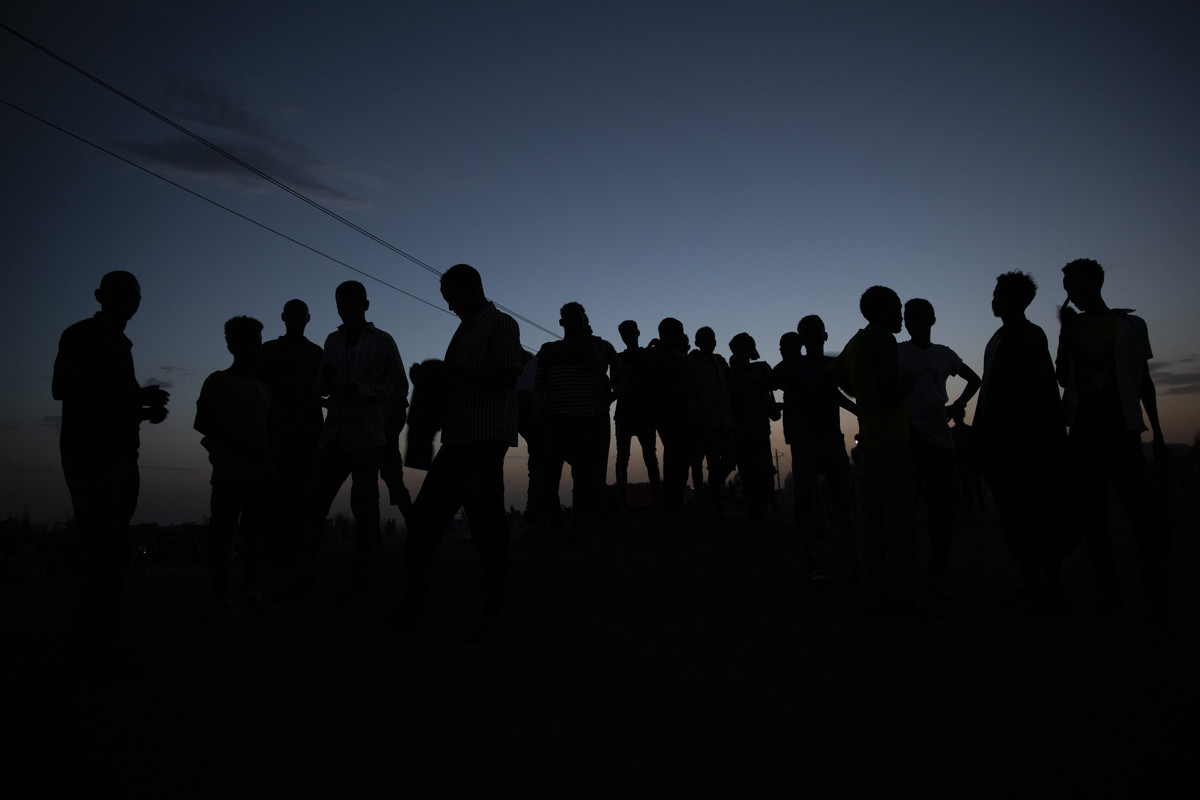
Tigrayan refugees who fled the conflict in the Ethiopia's Tigray gather after the sun sets in Hamdayet, eastern Sudan, near the border with Ethiopia, on March 23, 2021. For months, it has been the Tigrayans' word against that of the government in Ethiopia, Africa's second most populous country and one of its most powerful. But now, for the first time, there is official proof of what is being called ethnic cleansing in the form of identity cards smuggled across the border into this Sudanese border post and confirmed to The Associated Press by more than a half-dozen refugees from different communities. (AP Photo/Nariman El-Mofty)